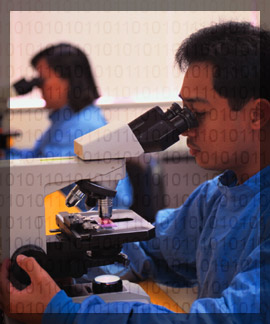Archival Notice
This is an archive page that is no longer being updated. It may contain outdated information and links may no longer function as originally intended.
Home | Glossary | Resources | Help | Contact Us | Course Map
DNA typing evidence was first admitted in a U.S. court in Florida in the late eighties [Andrews v. State, 533 So.2d 841; 13 Fla. L. Weekly 2364 (Fla. Dist. Ct . App. 1988)]. Since then, DNA typing has gained acceptance in courts throughout the country as courts recognized the sheer power of this new forensic tool to identify the source of biological evidence. There are two aspects of DNA typing: the typing technique itself and the statistical probability estimate once a match is found. Each or both of these may be the subject of a pretrial admissibility hearing which in turn will be regulated by statute, rules of evidence, or case law.
Prosecutors have successfully met the many defense challenges to DNA typing, regardless of what admissibility standard were applied. Through documentary evidence presented by the prosecutor, courts should deny or limit the scope of any admissibility hearing based on the scientific and legal communities' established acceptance of DNA methodologies. Prosecutors should argue that DNA typing procedures and DNA forensic identification are so well accepted and established that an admissibility hearing is not justified and should be afforded judicial notice.
Additional Online Courses
- What Every First Responding Officer Should Know About DNA Evidence
- Collecting DNA Evidence at Property Crime Scenes
- DNA – A Prosecutor’s Practice Notebook
- Crime Scene and DNA Basics
- Laboratory Safety Programs
- DNA Amplification
- Population Genetics and Statistics
- Non-STR DNA Markers: SNPs, Y-STRs, LCN and mtDNA
- Firearms Examiner Training
- Forensic DNA Education for Law Enforcement Decisionmakers
- What Every Investigator and Evidence Technician Should Know About DNA Evidence
- Principles of Forensic DNA for Officers of the Court
- Law 101: Legal Guide for the Forensic Expert
- Laboratory Orientation and Testing of Body Fluids and Tissues
- DNA Extraction and Quantitation
- STR Data Analysis and Interpretation
- Communication Skills, Report Writing, and Courtroom Testimony
- Español for Law Enforcement
- Amplified DNA Product Separation for Forensic Analysts


